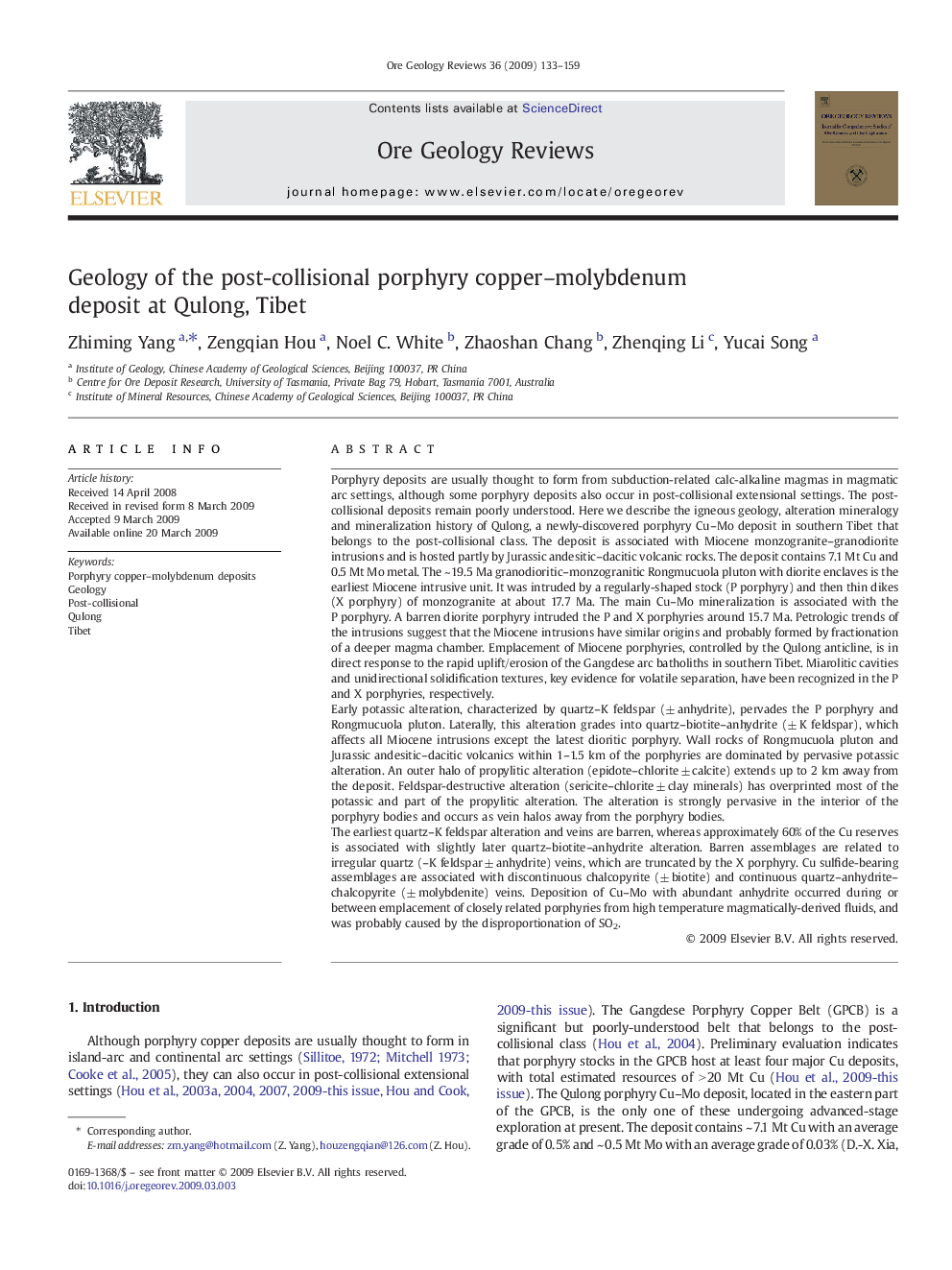| کد مقاله | کد نشریه | سال انتشار | مقاله انگلیسی | نسخه تمام متن |
|---|---|---|---|---|
| 4697866 | 1637264 | 2009 | 27 صفحه PDF | دانلود رایگان |

Porphyry deposits are usually thought to form from subduction-related calc-alkaline magmas in magmatic arc settings, although some porphyry deposits also occur in post-collisional extensional settings. The post-collisional deposits remain poorly understood. Here we describe the igneous geology, alteration mineralogy and mineralization history of Qulong, a newly-discovered porphyry Cu–Mo deposit in southern Tibet that belongs to the post-collisional class. The deposit is associated with Miocene monzogranite–granodiorite intrusions and is hosted partly by Jurassic andesitic–dacitic volcanic rocks. The deposit contains 7.1 Mt Cu and 0.5 Mt Mo metal. The ~ 19.5 Ma granodioritic–monzogranitic Rongmucuola pluton with diorite enclaves is the earliest Miocene intrusive unit. It was intruded by a regularly-shaped stock (P porphyry) and then thin dikes (X porphyry) of monzogranite at about 17.7 Ma. The main Cu–Mo mineralization is associated with the P porphyry. A barren diorite porphyry intruded the P and X porphyries around 15.7 Ma. Petrologic trends of the intrusions suggest that the Miocene intrusions have similar origins and probably formed by fractionation of a deeper magma chamber. Emplacement of Miocene porphyries, controlled by the Qulong anticline, is in direct response to the rapid uplift/erosion of the Gangdese arc batholiths in southern Tibet. Miarolitic cavities and unidirectional solidification textures, key evidence for volatile separation, have been recognized in the P and X porphyries, respectively.Early potassic alteration, characterized by quartz–K feldspar (± anhydrite), pervades the P porphyry and Rongmucuola pluton. Laterally, this alteration grades into quartz–biotite–anhydrite (± K feldspar), which affects all Miocene intrusions except the latest dioritic porphyry. Wall rocks of Rongmucuola pluton and Jurassic andesitic–dacitic volcanics within 1–1.5 km of the porphyries are dominated by pervasive potassic alteration. An outer halo of propylitic alteration (epidote–chlorite ± calcite) extends up to 2 km away from the deposit. Feldspar-destructive alteration (sericite–chlorite ± clay minerals) has overprinted most of the potassic and part of the propylitic alteration. The alteration is strongly pervasive in the interior of the porphyry bodies and occurs as vein halos away from the porphyry bodies.The earliest quartz–K feldspar alteration and veins are barren, whereas approximately 60% of the Cu reserves is associated with slightly later quartz–biotite–anhydrite alteration. Barren assemblages are related to irregular quartz (–K feldspar ± anhydrite) veins, which are truncated by the X porphyry. Cu sulfide-bearing assemblages are associated with discontinuous chalcopyrite (± biotite) and continuous quartz–anhydrite–chalcopyrite (± molybdenite) veins. Deposition of Cu–Mo with abundant anhydrite occurred during or between emplacement of closely related porphyries from high temperature magmatically-derived fluids, and was probably caused by the disproportionation of SO2.
Journal: Ore Geology Reviews - Volume 36, Issues 1–3, October 2009, Pages 133–159